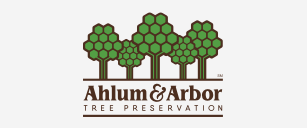It is not uncommon for us to get questions about how to protect trees from deer damage.If you have noticed bark being scraped off the trunks of your young trees, here is an explanation for what is going on and how to protect your trees.
Why does this happen?
Bucks, in preparation for the mating season, or rut, will rub on tree bark in order to remove their antler’s velvet covering. Rubs are a way for bucks to mark their territory, visually and through scent.
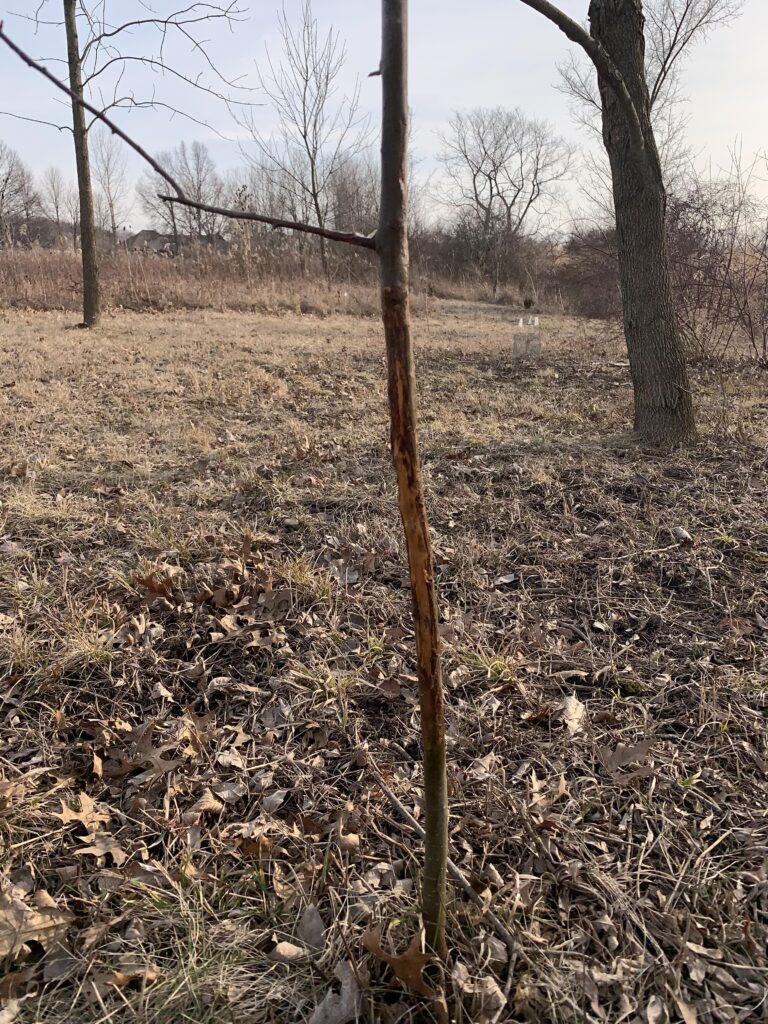
Deer rub on tree.
Deer rubbing can take place as early as August and as late as February. While rut is over by February, deer rubbing behavior can still be identified.
The trunks of young trees should be protected as soon as they are planted in order to keep them from getting significantly damaged during their most vulnerable growth period.
Which trees are susceptible?
Deer tend to be attracted to trees smaller than 2-3 inches in diameter. Once a tree has attained 5-6 inches in diameter, bucks tend to pass by and choose smaller trees.
Perhaps the deer rule out trees that are “too large for antler tickling”?
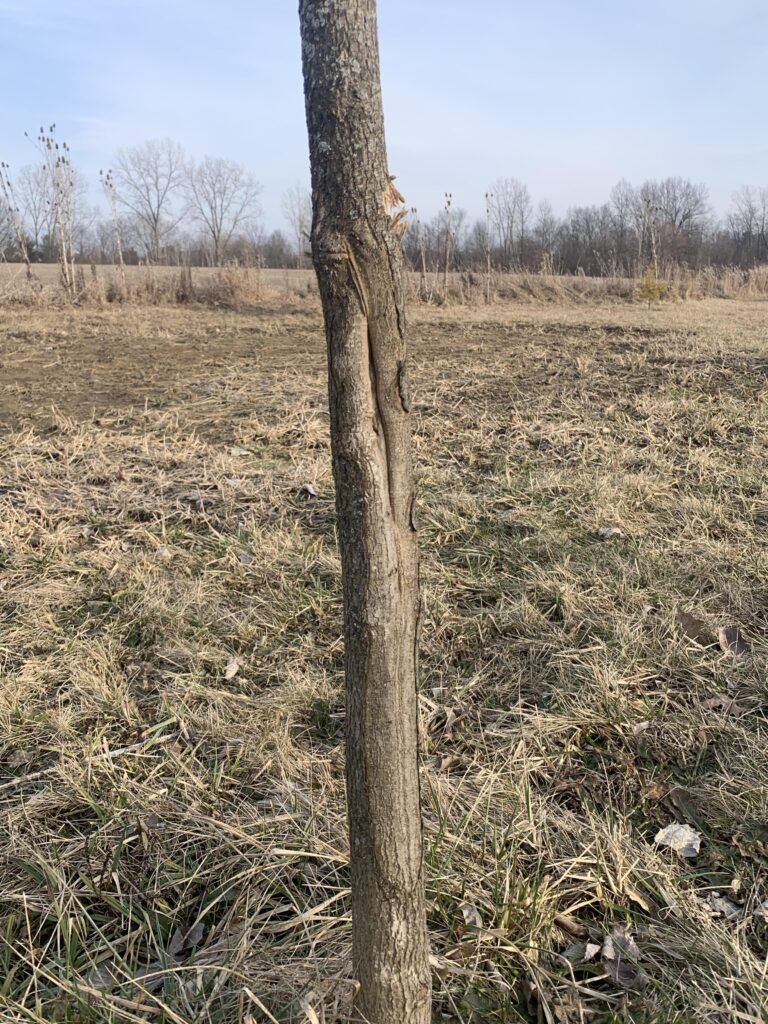
A tree that has recovered from tree rubs.
The exception to this is a buck that has been returning to the same tree since it was small, provided the tree has survived.
How do I protect my trees?
The best form of protection allows air and sunlight through to the bark, but still provides a physical barrier from animal life.
Fence-like protection, something like snow fence, is the best tree care easy to install around the trunk. There is also a more rigid material, sold as “tree bark protection” or “deer protection” that is more durable.
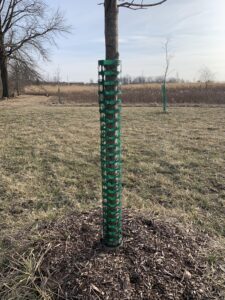
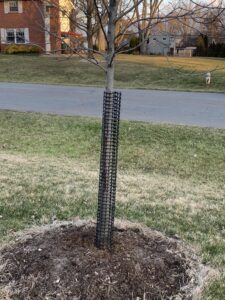
Fence protection around young trees.
If the tree’s growth causes the protection to get too snug around the trunk, it should be replaced and loosened.
Trunk protection may not help in all cases of damage caused by deer, but it’s a great start to helping your young tree have the best chance of survival.
